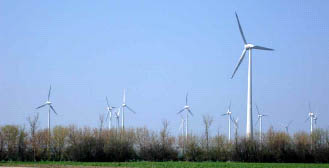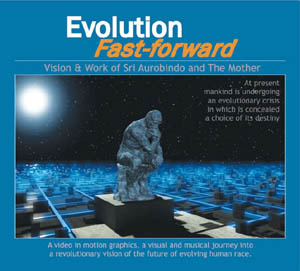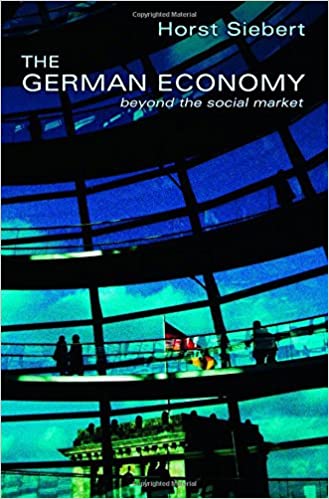
Welcome to the Club of Amsterdam Journal.
Germany has been Holland’s neighbour longer then we can imagine. As a small country balancing on the edge of a continent we are poised between a landmass and the sea. That has always been our position and we have been able to make the best of it by becoming a trading nation. Traders cannot afford enemies and so we also balanced our relations with the surrounding nations. Germany is out biggest neighbour and one of our most important trading partners. When it pours in Germany it rains in the Netherlands. The ties between the two countries have always been very close. German 19th century authors went on holiday in Zandvoort and rich Dutch went to Berlin.German was taught at most schools and German philosophers were all the rage. Obviously the Second World War has made a breach in the relation between the two nations. Yet we are still connected on many levels: economically, culturally and linguistically. After 1945 the Dutch have set their course west and looked to the other side of the ocean for guidance and inspiration. Maybe it is time that we looked east and take some examples form the German rule book to learn from their amazing success. Concept:
Peter van Gorsel, Educational Business Developer, University of Amsterdam / UvA/HvA
Join us at the future of Germany – Thursday, 26 April!
…. interested in knowing more and sharing thoughts and ideas …. email us!
Felix Bopp, editor-in-chief
Feldheim in Germany – an inspiration for green energy

by Raphaelle Beguinel, Assistant Editor, Club of Amsterdam Journal

While Germany has been at the forefront of green energy research and sustainable development for decades now, the past years have shown that, in practice, its political environment and regulations stand as obstacles to the municipalities’ initiatives. The example of Feldheim, a small village located 60 kilometers off Berlin in the Brandenburg countryside, shows the difficulties and challenges that German municipalities have to put up with to develop their own renewable energy alternative solutions. Most importantly, Feldheim has become, since the 2011 Fukushima nuclear catastrophe, a worldwide attraction as a sustainable alternative for villages, towns and cities to produce their own energy.

Started in 1995 with a few windmills, Feldheim, located in a windy area with a local corn agriculture and pig breeding, has become in a little over 15 years, a model city for renewable energy. It is the only German town that has managed to achieve energy independency by constructing its own energy grid and getting enough energy from renewable sources such as wind and biogas, to provide electricity and heating to all of its households. 43 giant wind turbines now stand in a nearby field providing electricity to the 150 inhabitants distributed among 37 houses. It is this innovative solution, put in place and action by Mayor Michael Knape, combining energy self-sufficiency provided by the local grid and reliance on common renewable energies that have attracted over 3,000 visitors to Feldheim in 2011. Around fifty per cent of the visitors came from Japan, the rest spread across the globe between Canada, South America, South Korea and Australia, and the number of visitors is still rising.
| But achieving such as success hasn’t been without obstacles and challenges put up by the government and by the energy companies, disadvantaged by the search for energy independency of Feldheim and other municipalities in Germany. This is surprising giving the policy objectives set by Angela Merkel, Chancellor of Germany, in 2011 aiming at a phase-out of nuclear energy with the objective of attaining 35% energy providing by renewable sources by the year 2020. But in practice the federal government was soon to cut funding for a large number of renewable energy programs and projects, especially concerning solar energy. The European Union has been of help to Feldheim’s projects for it financed half of its 1.7 million euros biogas factory for its startup costs. Completed in 2008, this factory provides to the inhabitants heating by using the slurries of pig and corn manure and proving useful to the town’s local agriculture because corn production and pig breeding already existed. In the same year, the town decided to increase its energy independency by taking over its own grid. Nevertheless, the grid being own by E.on, a French energy company, they decided to construct their own grid with the help of Energiequelle, a German energy company. This initiative, completed at the end of 2010 and for which each villager invested 3,000 euros, enabled Feldheim to reduce the cost of electricity, per villager, by 31 percent and the cost of heating by 10 per cent. But, to get to these results, the town has had to fight the country’s most important utility companies and the government through energy regulators, even though no aspect of its initiatives can be proven illegal. The town had to prove, exceeding common energy regulation requirements, that the new grid would surpass the standards provided by public utilities. Among other requirements it had to be proven that there would be no interruption in the energy supply, even though an interruption would last only a split second and no inhabitant would be aware of it. Despite its obvious success, Feldheim’s example is a subject of discussion for the German government but also for the ones who would want to take example on this alternative energy model. The government’s main reserve stands mainly in the competition this model presents to the public utilities and its refusal for self-sufficient towns to produce more energy than they need. The state thus refuses that Feldheim and other German cities already following its path use their local production to financial aims in possibly supplying energy to other municipalities to increase their financial income. What’s more, the possibilities in replicating Feldheim’s model appear to be limited. Indeed, it is because of its weather and agricultural environment that Feldheim has been able to reach local independent energy supplying. But not every German town, or locality in the world, has strong wind or proper agricultural production to launch green energy projects and rely on its own energy supply. But there is hope in the possibilities of conversion for other towns in adapting the Feldheim model to their own situation. More than 300 villages in Germany are currently launching projects and programs, inspired by the Feldheim model, despite the challenges. Beyond the local scale, Berlin, as a major German city, has organized a petition for the municipality to take control of its electricity network in 2014 when its contract with the energy supplier Vatenfall ends. Feldheim’s example is not to be copied but must stand as an inspiration and an alternative path for renewable energy resources and sustainable development. Germany and cities shouldn’t replicate it but follow it. |
Next Event

the future of Germany
Thursday, April 26, 2012, 18:30-21:15
Location: Kamer van Koophandel Amsterdam – Netherlands Chamber of Commerce, De Ruyterkade 5, 1013 AA Amsterdam
This event is supported by the Kamer van Koophandel Amsterdam
The conference language is English.
The speakers and topics are:
Hanco Jürgens, Researcher, Teacher, Institute for German Studies at the University of Amsterdam
The German model: From sick patient to the leading political economy of Europe
Roman Retzbach, futurologist, director, Future-Institute international, Berlin
Frans Vogelaar, Professor, Academy of Media Arts Cologne, Founder, Hybrid Space Lab, Berlin
InertInnovation
and our moderator Peter van Gorsel, Educational Business Developer, University of Amsterdam / UvA/HvA
Evolution Fast-forward

An Auroville-produced video about the vision and work of Sri Aurobindo and the Mother, done entirely using computer motion graphics. It presents the evolutionary crisis, the two negations and the synthesis of Consciousness and Force. For those who already know about Sri Aurobindo and the Mother the video provides a contemporary way of presenting their teachings. For the new generation who may not know about these two visionaries, the narrative style of the video using universal symbols makes their vision and world view easy to access.
The film has duration of 22 minutes and is also available as DVD in PAL format. You can buy high resolution DVD of Evolution Fast-forward from:
www.auroville.com
Written & Directed by Manoj Pavitran
Visuals created by Hemant Shekhar
Edited by Doris van Kalker
Music Composed by Arnab B Chowdhury / Ninād team
Voice over by Anuradha Majumdar and Angad Vohra
Sound Mixing by Manosh Bardhan / Astha Studio
Produced by Upasana Design Studio – Auroville
Composing music is like touching one’s reflection during a boat journey on a quiet lake.
The subject, object, journey and destination fuse into a repose and yet remain in motion.
Playing with a palette of swaras (notes), sounds (nada), harmonies, motifs (ragas) and beat (tala);
a composer listens to himself as he weaves a soundscape.
The Human Crisis
00:00
a continuous twin chord of strings evokes a deep pathos a beat heralds our imminent need to reconsider our lives, the chord and the beat culminate into a Life-Solution called Integral Yoga.
God at Work
06:15
a timbre synergizes the overtones of tanpura and santoor trails of a raga motif weave patterns in spirals; to fuse the note ‘A440’ and ‘0’ as standards in their respective systems.
The Wall Game
14:52
a game of hide and seek between East and West spurred by change of scales and nuances in the arpeggio, a light jazz feel to give of space, delight and insight for the future.
An ensemble of synthetic timbre is rich in layers, Playing with silence in a dynamic manner helps us to absorb the troika: visual-word-music.
Arnab B Chowdhury
Club of Amsterdam blog

Club of Amsterdam blog
http://clubofamsterdam.blogspot.com
Burning Issues: Education
Burning Issues: Resources: Water, Energy, Air, Food
Burning Issues: Health
Burning Issues: Climate Change / Sustainability (1)
Burning Issues: Climate Change / Sustainability (2)
Burning Issues: Economy / Stock Market / Poverty
Burning Issues: Waste / Pollution
Burning Issues: Globalization
The ultimate freedom: beyond time
Limits to Knowing
Socratic Innovation
News about the Future

Your tattoo is calling
Nokia has a patent pending for vibrating tattoos that can be etched on your skin to let you know when your phone is ringing. The user would have to scratch their arm to dismiss the alert.
Nokia filed a patent application that would create “a material attachable to skin, the material capable of detecting a magnetic field and transferring a perceivable stimulus to the skin, wherein the perceivable stimulus relates to the magnetic field.”

First Food Forest in Seattle
The ethics, principles and concepts of permaculture design and community involvement will guide both the process and design product. A Food Forest is a design method and land management system based on a woodland ecosystem type of permaculture. The project will increase the skills and knowledge base of the Beacon Hill community related to growing food and managing the integrated systems of the Food Forest. This will add to the growing body of knowledge to support innovative urban food projects in Seattle. All will be available for public plucking to anyone who wanders into the city’s first food forest.
Economic forecasts for Germany
Deutsche Bundesbank, December 2011
Outlook for the German economy – macroeconomic projections for 2012 and 2013
The crisis in public finances in a number of euro-area countries, the ensuing uncertainty as well as the general economic slowdown are placing a strain on economic activity in Germany. Although the domestic conditions for an extended and broadly based upturn in Germany remain intact, its high degree of openness means that demand impulses from the main sales markets abroad are of major importance for the German economy.
Following a 3.0% rise in economic output in the current year, the pace of expansion in Germany is likely to fall perceptibly to 0.6% in 2012 as a result of a lean period during the winter months. This forecast assumes that there will be no further significant escalation of the sovereign debt crisis. Instead, the baseline scenario is predicated on investors’ and consumers’ uncertainty gradually receding somewhat. The German economy could then return to a sound growth path in the course of next year, based on a continuing expansionary monetary policy and faster global economic growth. Under these conditions, gross domestic product (GDP) could grow by 1.8% in 2013. Given an estimated potential growth of 1¼% per year, this means that the German economy would be operating, by and large, at normal capacity over the entire forecast horizon.
Consumer prices have risen sharply in the current year in line with the quite dynamic global and domestic activity. On an annual average, the cost of living is likely to go up by 2.5% on the year. For the two following years, noticeably lower rates of inflation of 1.8% and 1.5% respectively are likely. First, the rise in the cost of imported goods, especially for energy, should remain within narrow bounds. Second, domestic price pressure is likely to increase only moderately.
Uncertainty about future economic developments is extremely high at present. If the scheduled reforms succeed in overcoming the fiscal crisis and in allaying investors’ caution in the near future, growth in Germany might be higher over the medium term than outlined here. Nevertheless, greater weight should be attached to the downside risks stemming from the sovereign debt crisis.
[…]
January 2012
Future made in Germany: Germany’s growth is becoming increasingly sustainable
Federal Environment Ministry and Federal Environment Agency publish the 2011 Report on the Environmental Economy
The 2011 Report on the Environmental Economy, the second after the 2009 report, presents the latest developments, challenges and prospects of the environmental economy in Germany. It shows that Germany has already made significant progress on the road to new, environmentally sound growth. Today, much less resources, land and energy are used, and fewer pollutants are emitted, than just ten years ago to obtain the same yield.
The environmental economy is a cross-sectoral industry comprising companies that produce and supply environmental goods and services. The report documents the sector’s increasing importance for the German economy as a whole and confirms the pioneering role of German companies in this field. There has been above-average growth in the production of environmental goods in Germany, now totalling a production volume of almost 76 billion euros. With a global trade share of 15.4 percent, Germany is at the forefront in the export of environmental goods. According to the latest calculations there are now almost 2 million employees in the environmental economy – a new record. Federal Environment Minister Norbert Röttgen is convinced: “the transformation of our energy system will considerably accelerate this trend.”
Minister Röttgen stressed that the report is also proof of the shaping force of policy on the road to sustainable, resource-efficient economic activities and lifestyles: “The innovative strength of the environmental economy is also a sign of the success of environmental and energy policy.”
Renewable energies remain the driving force behind this dynamic development. Even during the global economic crisis, production of goods in this sector increased despite the general downward trend. According to a Roland Berger forecast, the global market for green energy technologies will almost quadruple by 2020, and for renewables such as photovoltaics, solar thermal energy, biogas and wind energy, annual worldwide growth rates in turnover of between 15 and over 30 percent are expected – a major opportunity for German companies.
The forward-looking focus of sustainable production is also emphasised by a further interesting development: in the environmental economy there is a huge amount of intensive and continuous research. Almost 80 percent of production areas in the environmental sector are especially research- and knowledge-intensive. The goal is to connect innovation and environmental policy in a constructive way and at the same time to tap new markets for environmental technologies – an important issue in the Science Year 2012.The Report on the Environmental Economy illustrates that Germany has already made considerable progress with the ecological modernisation of the economy and society: between 1990 and 2010 energy productivity rose by 38.6 percent and raw material productivity by 46.8 percent. There were also positive developments regarding air pollutant emissions: a 56.4 percent reduction was achieved in the reporting period compared with 1990. Germany is also at the forefront of recovery of waste and its environmentally sound disposal: around 90 percent of construction waste and 63 percent of municipal and production waste are already being recycled.
Federal Environment Minister Röttgen commented: “Germany’s growth is becoming increasingly sustainable. The 2011 Report on the Environmental Economy illustrates the dynamic and potential of this development. Germany is increasingly achieving a continuous reduction in environmentally harmful emissions, closing substance cycles where possible and using resources efficiently. The transformation of our energy system is the most important strategic guide on this path. It strengthens the capacities of our environmental economy and is the foundation for further accelerating the sustainable restructuring of our energy supply, our industry and our society. Germany wants to remain a highly industrialised country, but one that is high-tech, competitive and forward-looking. The Closed Substance Cycle and Waste Management Act and the resource efficiency programme are the next concrete steps on this road.”
Jochen Flasbarth, President of the Federal Environment Agency, noted: “The Report on the Environmental Economy proves that environmental protection in Germany is a huge success story for the economy. Without environmental protection as an economic driving force, Germany would have been much worse off throughout the crisis. There are major opportunities for employment in particular in the fields of climate protection and increasing resource efficiency. There are also excellent prospects for the export of environmental and efficiency technologies because the global markets for these technologies will grow at a well-above-average pace in the coming decades. Germany should therefore resolutely follow the path to a green economy for economic reasons, too. This is important because other countries such as China and South Korea have also recognised the opportunities environmental protection offers.”
The Report on the Environmental Economy is based on numerous research projects and data from statistical offices.
Recommended Book

The German Economy: Beyond the Social Market
By Horst Siebert
In this book, one of Germany’s most influential economists describes his country’s economy, the largest in the European Union and the third largest in the world, and analyzes its weaknesses: poor GDP growth performance, high unemployment due to a malfunctioning labor market, and an unsustainable social security system. Horst Siebert spells out the reforms necessary to overcome these shortcomings. Taking a broader view than other recent books on the German economy, he considers Germany’s fiscal policy stance, product market regulation, capital market, environmental policy, aging and immigration policies, and its system for human capital formation as well as Germany’s role in the European Union, including the euro zone.
Germany’s system of economic governance emerges as a common theme as Siebert examines why this onetime economic powerhouse is today a faltering giant. He argues that what Germany needs, above all, is a market renaissance; that it must throw off the shackles of its social welfare economy and of its hallmark consensus approach, whereby group-based cooperative decision-making has undermined competition and markets. In doing so he examines both the country’s social security system and its labor market, including trade unions. His focus throughout is on Germany’s present concerns, foreseeable future problems, and long-term policy issues.
Modern Houseboats in the Netherlands
Is it a boat or a house? Is it romantic or utilitarian? It’s a hybrid. It’s not what it appears to be.
Building on water is another story altogether….
Water is not like land. If you plan to build on water, you need to do so with respect for the unique nature of water. Water is pioneering, water is adventure, danger, and relaxation, water lets you elude the rules of dry land. Living on water also means views, movement, boat docked at home, romance, jetties, a sense of individuality, wind and clouds, space, contact with the elements, feeding swans from your kitchen, ice skating around your house…
The houses are built on a shipyard and transported by water to the location.
Dutch architect Marlies Rohmer has taken the traditional houseboat as a model and brought it into the 21st century creating a new whole new neighbourhood on the water.
Tofu energy

Tofu is a very popular food in Bandung and around the Sunda region in Indonesia.
More and more options are being explored in the priority for the protection of the environment and the search for renewable energy and sustainable development in industry. In Indonesia, the industry of tofu is a great ecological concern.
Taking the example of the city of Bandung, researchers at the Indonesian Institute of science calculated that 300,000 cubic meters of methane and other acid liquid residuals are released per day by the industries producing tofu because of the necessary soja fermentation. It is a clear ecological disaster for these toxic residuals are poured into the river and city suburbs reaching to millions of households and methane presents a potential for global warming twenty times superior to carbon dioxide. Moreover, it appears to be a huge waste for an alternative renewable energy.
According to Neni Sintawardani, a physics researcher at the Indonesian Institute of science, these wastes can be transformed in biogas and could be delivered to tofu producers in providing energy for the cooking of the soja. This appears to be an ideal solution, for the transformation into biogas has been certified by experiments in laboratory but its implementation remains difficult because of the tofu producer’s skepticism and the high costs involved. But the enthusiasm of a number of city officials for the construction of a biogas reactor for the recycling of the tofu industry wastes gives hope for the future. Eventually, the tofu producers will hopefully stop throwing their toxic wastes in the city’s canalizations and convert to this sustainable development solution.

Workers had to operate in very humid conditions in the factories and are susceptible to contact with the acidic wastewater in the tofu production process.
Futurist Portrait: Josephine Green

Josephine Green currently stands as one of the futurists to watch and has been a prominent figure in the field of trend forecasting for years now. Having graduated from Warwick University in England in History and Politics, she started working in various fields such as marketing and applied research for advanced strategy. Her skills, wit and innovative vision in trend forecasting were truly revealed while she was senior director of trends and strategy at Philips Design from 1997 to 2009. She was then responsible for directing social research for the Strategic Futures Program in the specific fields of cultures, people and society. This research program was led to articulate strategic opportunities for the brand through design with identified emerging trends in technology, business and socio-cultural interests and values. The innovative position of Josephine Green as futurist and trend forecaster stands in her unique approach to the field with a new thinking to socio-cultural values and processes and to sustainable development. Adding to her important senior position at Philips design for twelve years, Green has also delivered throughout these years numerous lectures in a number of universities for executives courses and masters. Moreover, Green has been attached to Glasgow School of Art and design for years now as visiting professor.
Pursuing a multifaceted career, Josephine Green has shined outside Philips and universities’ realms in delivering searched for international presentations worldwide and occupying a position of member of the Advisory Board of the European Futurists Conference Lucerne. Josephine Green also published a book titled Democratizing the Future: Towards A New Era of Creativity and Growth. Inspired and influenced by her politics and history study background, Green in her book presents a macro perspective of the future. Focusing on the broader picture and projecting herself further than what might happen tomorrow, she emphasizes the emergence of a new paradigm. For her, in these times of great change, citizen outrage we have witnessed across the globe stands as “a symptom of the eroding pyramid social structure”; leaving us with this “pancake paradigm”. In this new paradigm, democratized groups work together with more freedom but greater confusion. Green alerts us of the necessity to realize that technological consumerism and our craving for marketable goods are far from being sufficient guarantees for a better life or higher growth, especially considering ecological pressing issues.
Presentation
Agenda

Season Events 2011/2012
NEXT Event
April 26, 2012
the future of Germany
April 26, 2012, 18:30 – 21:15
Location: Kamer van Koophandel Amsterdam – Netherlands Chamber of Commerce, De Ruyterkade 5, 1013 AA Amsterdam
Supported by Kamer van Koophandel Amsterdam

May 31, 2012
the future of Taxes
Location: Info.nl, Sint Antoniesbreestraat 16. 1011 HB, Amsterdam
Supported by Info.nl
June 28, 2012
the future of Urban Energy
Option: Guided Tour 17:00
Location: Van Eesterenmuseum, Burgemeester De Vlugtlaan 125, 1063 BJ Amsterdam
Supported by the Van Eesterenmuseum & Freelance Factory
Credentials
Felix Bopp, Editor-in-Chief
Raphaelle Beguinel, Assistant Editor






Customer Reviews
Thanks for submitting your comment!